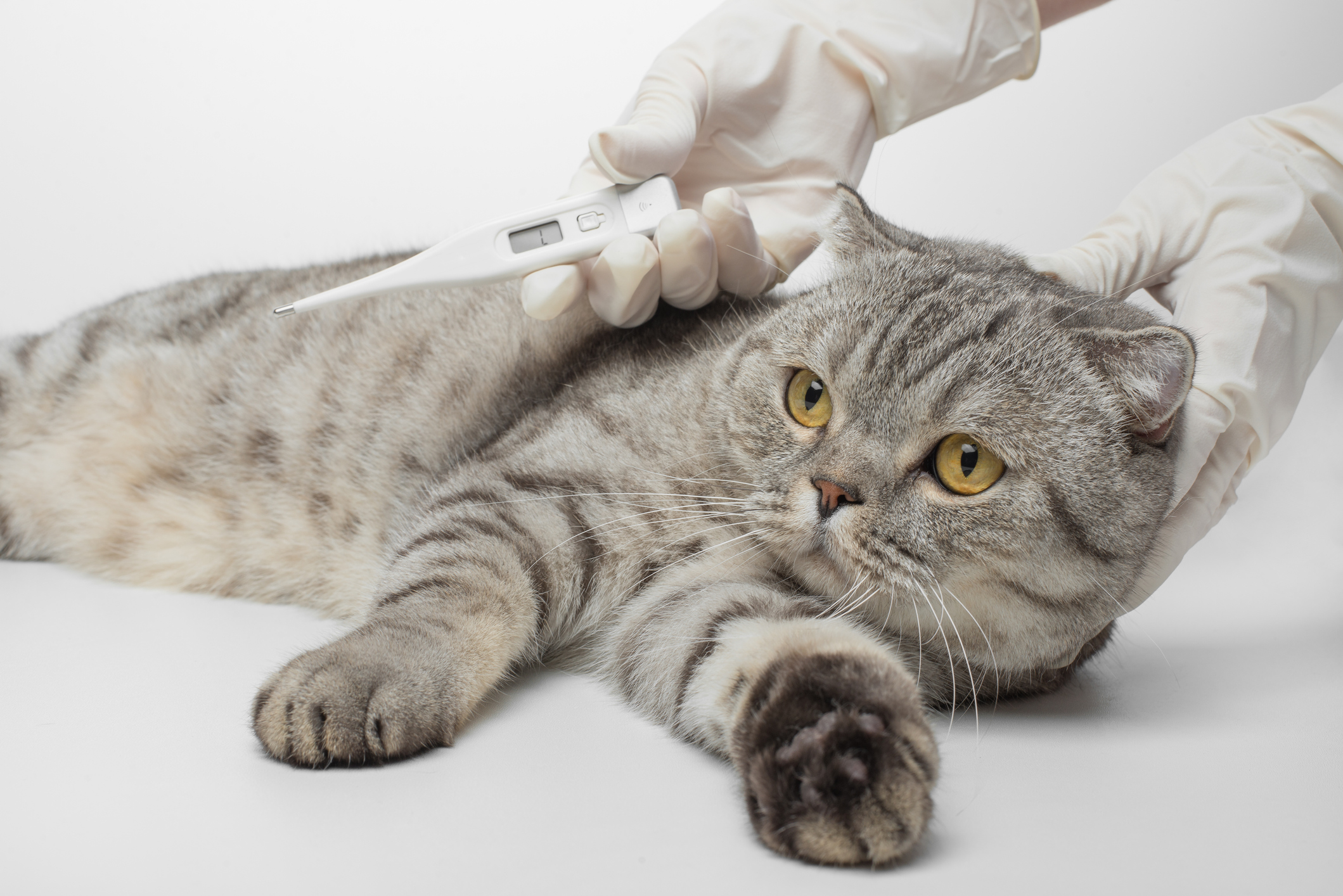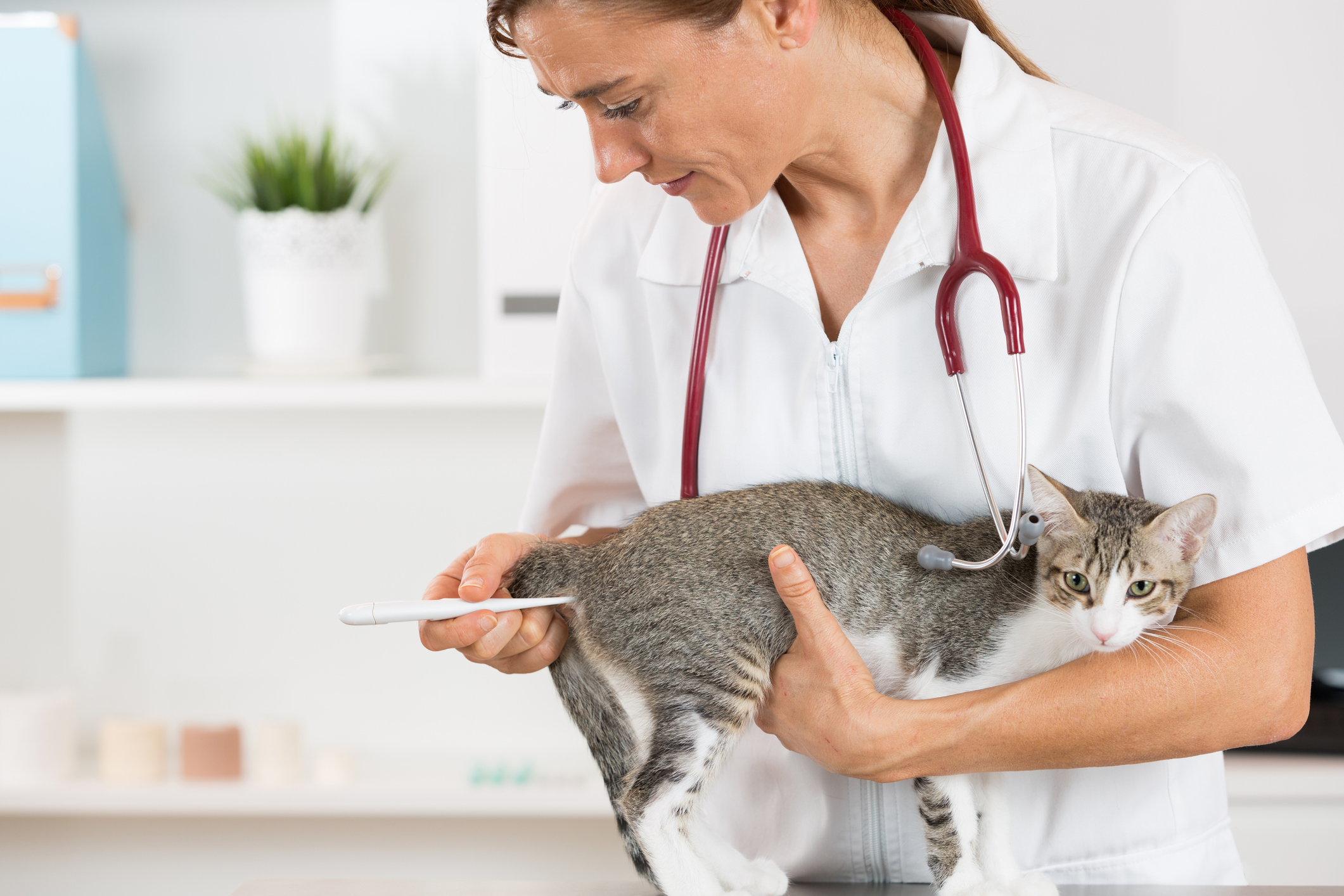
How a Fever Can Be Responsible for Your Cat's Strange Behavior
Although cats are notorious for hiding symptoms of illness or injury, watchful pet parents are usually able to tell when something is slightly off with their furry friend. Perhaps your kitty hasn’t emptied their food bowl like they usually do, or maybe they’re acting more withdrawn than usual. When these small changes occur in rapid succession, it’s normal for you to be a little worried.
Unfortunately, even when you notice that something is wrong, it’s unlikely that you’ll be able to get to the bottom of it on your own. Many health problems in cats cause similar symptoms, so what you think might be one issue might actually be another. This is often the case with feline fevers.
A fever, also known as pyrexia, in cats can be quite dangerous, particularly because it’s not commonly caught by pet parents at home. Most cat owners don’t think to break out the rectal thermometer as soon as their cat starts acting strangely, meaning the fever could go unnoticed until the furry friend is brought into the vet.
By understanding more about fevers in cats and how to spot them, you might be able to identify it earlier in your cat and get them the help they need.
The basics of feline fevers

A cat’s normal temperature typically falls between 99.5 and 102.5 degrees Fahrenheit (37.5 and 39.1 degrees Celsius). When the temperature rises above this point, usually ranging from 102.6 to 104 degrees F (39.2 to 40 degrees C), your cat is experiencing a fever. It’s possible for fevers to climb even higher. A fever over 104 degrees F could put your cat at risk for severe health problems, including internal damage.
Like in humans, a cat’s fever is a natural response from their body to fight an infection or another pathogen. Unfortunately, fevers that persist for too long can be quite dangerous.
Fevers can be caused by a wide range of things. Bacterial or viral infections, diseases, problems with the organs, toxins and cancer may all lead to an elevated temperature in cats. In some cases, the cause of the fever is unknown. Unfortunately, all of these underlying problems can present a fever and other similar symptoms, making diagnosing the problem based on fever alone impossible. Other tests, including blood work, X-rays and urinalysis, are usually necessary to determine the underlying cause and find a treatment solution.
Look out for behavioral changes
When a cat is experiencing a fever, they may begin to exhibit certain behavioral changes and physical symptoms that clue you into a health problem. Unfortunately, unless your first thought is to take your cat’s temperature at home, you may believe the problem is related to something else or opt to wait it out for a day or two. This can put your cat at significant risk. If their fever is high enough, allowing the fever to persist without treatment could lead to internal damage.
This is why looking for signs of a fever is so important.
- Loss of appetite: One of the most common signs of illness in cats is inappetence. When your kitty doesn’t feel good, they’re less likely to want to eat. If inappetence persists longer than a day, you’ll know something is wrong, and it could be a fever.
- Lethargy: Sick cats tend to lay around and be uninterested in playing or moving at all. This may be related to muscular weakness that is common with a fever.
- Hiding or acting more withdrawn: If your cat is normally social and loves to hang around people but suddenly becomes withdrawn with no obvious sign of stress, they might be feeling ill.
- Shivering/shaking: Shivering is one of the most unique symptoms of fevers in cats. It can be a little difficult to tell if your cat is shivering, rather than twitching occasionally. Usually, shivering will be more persistent and stronger than a twitch.
- Dehydration: When your cat’s body temperature remains high for a long time, the excess heat can make them dehydrated. This may lead to stickiness of the gums, constipation and dehydration of the skin. One way to tell is to lift your cat’s skin at the nape of their neck and let the skin drop. If it doesn’t snap back into place, your cat is probably dehydrated.
If you notice your cat is acting strangely and shows these symptoms, you should contact your veterinarian right away.
Monitoring and managing your cat’s fever

Typically, your vet will want to examine your cat if you believe they are running a fever. However, with their instruction, it may be useful to take your cat’s temperature at home before and/or after the examination in order to monitor your cat’s progress.
The most reliable way to take a cat’s temperature is through the rectum. The best thermometer to use is a standard digital or rectal thermometer covered in a lubricant like petroleum jelly. You’ll need to lift your cat’s tail and gently insert the thermometer into the anus, holding it still until the thermometer reads a temperature. Because your cat may become agitated during this procedure, you should only take your cat’s temperature on your own when instructed by a veterinarian.
If you or your vet determine your cat does have a fever, you will likely need to wait for the results of additional tests to determine the best course of treatment. Your cat may need subcutaneous or intravenous fluids, antibiotics, steroids or other medications to solve their underlying problem and help the fever break.


